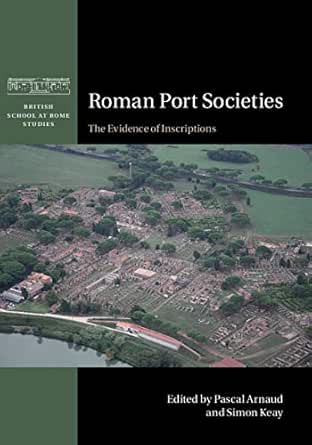
Table of Contents
The ancient power port of Rosas
The ancient port of Rosas, known today as Roses, is located on the northeastern coast of Spain in the region of Catalonia. During the Roman period, it was known as Rhode or Rhodos and was an important coastal settlement in the Roman province of Hispania Tarraconensis.
Historical Background of Rosas
Rosas has a rich history that predates the Roman occupation. Originally founded by Greek settlers from Rhodes in the 5th century BC, it became a significant trading hub due to its strategic location on the Mediterranean. When the Romans took control of the Iberian Peninsula, they recognized the value of this port and integrated it into their extensive network of trade and military operations.
The Port of Rosas in the Roman Period
During the Roman period, Rosas flourished as a key port in the region. It served as a crucial point for maritime trade, connecting Hispania with other parts of the Roman Empire, particularly Gaul (modern France) and Italy. The port was likely bustling with activity, with ships arriving and departing, carrying goods such as olive oil, wine, fish, and other products that were essential to both the local economy and the broader Roman trade networks.
The Romans also developed the infrastructure of the port, enhancing its facilities to accommodate larger vessels and increasing the efficiency of trade and communication. The presence of the Roman military in the area also made the port a vital supply and logistics point for campaigns and defense operations in the region.
The Roman Fortress at Rosas
Adjacent to the port, the Romans constructed a fortress to protect this strategic location. The fortress served multiple purposes: it acted as a military outpost, a defensive structure, and a symbol of Roman authority in the region. Given the importance of Rosas as a trading hub, the fortress was essential in securing the area against potential threats, such as pirate attacks or incursions by hostile forces.
The design of the Roman fortress would have included thick walls, watchtowers, and possibly barracks for soldiers stationed there. It was strategically positioned to oversee and protect the port and the surrounding area, ensuring the safety of both the trade routes and the local population.
Legacy
The Roman influence on Rosas is still evident today, with archaeological remains offering glimpses into the town’s ancient past. The ruins of the Roman fortress, although not as prominent as some other sites, continue to be a point of interest for historians and archaeologists exploring the region’s rich history.
Rosas, with its historical significance as a port and fortress town, played a key role in the Romanization of Hispania. It contributed to the integration of the Iberian Peninsula into the vast network of the Roman Empire, leaving a legacy that is still appreciated today through its archaeological sites and the continued importance of the port in the region.
This site, with its blend of Greek origins and Roman enhancements, represents the layers of history that make the Mediterranean such a fascinating area of study, showcasing the interconnectedness of ancient civilizations.
Was the fortress build by the Greek or the Romans?
The ancient settlement of Rosas, originally known as Rhode or Rhodos, was founded by Greek colonists from the island of Rhodes in the 5th century BC. The Greeks initially established the town and likely built fortifications to protect it, given its strategic coastal position. However, the specific large-scale fortress structures that we typically associate with later fortifications were primarily developed and enhanced during the Roman period.
When the Romans took control of the region, they recognized the strategic importance of Rosas and likely expanded or reinforced the existing Greek fortifications. The Romans were known for their advanced military engineering, and they often improved upon existing structures when they took over a settlement. Therefore, while the original fortifications may have been initiated by the Greeks, the significant fortress that protected the port during the Roman period would have been substantially developed or even completely rebuilt by the Romans to meet their military standards.
In summary, while the initial fortifications at Rosas likely had Greek origins, the major fortress that became crucial during the Roman period was primarily constructed and expanded by the Romans.
Ancient Roman and Greek ports, differences and similarities
Ancient Greek and Roman ports were vital for trade, military, and cultural exchange, serving as hubs of commerce and interaction. While sharing several similarities, they also exhibited distinct differences due to their cultural, political, and geographical contexts.
Similarities
Strategic Locations: Both Greek and Roman ports were typically situated in locations that provided natural harbors, protection from storms, and easy access to trade routes. For example, Athens’ Piraeus and Rome’s Ostia were strategically positioned near major waterways.
Trade Centers: Both served as critical centers for the exchange of goods. They facilitated commerce not only within their respective empires but also with distant lands, exchanging goods like olive oil, wine, grain, and pottery.
Cultural Exchanges: Ports in both civilizations acted as melting pots of cultures. Merchants, sailors, and travelers exchanged not just goods but also ideas, technologies, and religions.
Military Significance: Both Greek and Roman ports were crucial for naval power. They housed warships and served as bases for military operations. For example, the Athenian navy was vital during the Persian Wars, and Roman ports facilitated the expansion of the empire.
Urban Infrastructure: Ports in both cultures often developed sophisticated infrastructures, including warehouses, markets, and temples. They usually had fortified structures for defense and were often connected to the main inland city through roads.
Differences
Architecture and Design: Greek ports tended to be simpler, often lacking the extensive infrastructure found in Roman ports. Roman engineering excelled with advancements in dock construction, harbors, and lighthouses. The Romans built more elaborate and larger port facilities, like the massive harbor of Portus.
Political Control: Greek ports were often autonomous within city-states and could be politically independent, whereas Roman ports were usually integrated into the imperial administration, conforming to broader imperial policies and controls.
Economic Focus: Greek ports were often more focused on local trade and fishing, supporting city-states’ self-sufficiency. In contrast, Roman ports supported a vast empire’s need for long-distance trade, distributing goods across varied territories.
Development Over Time: Greek ports primarily developed in the context of city-states during the Classical period. The Romans expanded and developed ports extensively during the Empire, reflecting a more centralized and organized approach to maritime trade and military logistics.
Cultural Influence: Greek ports often retained Hellenistic influences and local customs due to the presence of autonomous city-states. Roman ports, while they adopted aspects of Greek culture, were more uniform in their policies and practices due to the centralized nature of Roman governance.
Conclusion
In summary, while ancient Greek and Roman ports shared key functions as trade and military centers, their differences in architectural complexity, political structure, economic focus, and cultural influences highlight the distinct ways these civilizations approached commerce and maritime activities. The evolution of maritime trade and naval power in both cultures played a significant role in their historical developments and legacies.
Online resources
Here are some online resources that provide information about the Port of Rosas (Roses) in Spain, covering its history, architecture, geography, and tourism:
1. Official Tourism Sites
- Visit Catalonia: VisitCatalonia.com
- Includes information on attractions, history, and activities to do in Roses and surrounding areas.
- Roses Town Hall Official Site: Roses Town Hall
- Offers details about local events, history, and tourism resources.
2. Historical and Cultural Information
- Local History Resources: Websites such as Histories de Roses
- Provides historical insights and cultural context about the area.
- Encyclopedia Entries: Websites like Wikipedia
- Offers a comprehensive overview of Roses, including its history and geography.
3. Geography and Nature
- Geographical Information: Meteo.cat
- Provides meteorological data and geographic details about the region.
- Natural Parks: Information about nearby natural parks like Aiguamolls de l’Empordà can be found on Catalan Natural Parks
4. Architecture and Landmarks
- Cultural Heritage Sites: Websites highlighting historical landmarks, such as the ruins of the Ciutadella de Roses, can often be found on tourism sites or local history blogs.
- Architectural Insights: Articles on sites like ArchDaily often feature notable architectural elements in the region.
5. Travel Guides and Blogs
- Travel Blogs: Search for travel blogs focusing on the Costa Brava which often cover Roses, providing personal experiences, travel tips, and insights into local attractions.
- TripAdvisor: TripAdvisor – Roses
- A wealth of user-generated reviews and recommendations for things to do in Roses.
6. Social Media and YouTube
- YouTube: Search for videos about Roses for visual tours, historical documentaries, and travel vlogs showcasing the area.
- Instagram: Use hashtags like #RosesSpain or #CostaBrava to find posts and experiences shared by travelers.
7. Academic Articles and Publications
- JSTOR or Google Scholar: Look for academic papers on the history and architecture of Roses.
These resources can provide a comprehensive view of the Port of Rosas, its history, architecture, geography, and tourism options.
Shop tips
What is your favorite ancient port and why ? Let us know!
Take time to learn
Invest in your future
Embark on a journey into the realm of affiliate marketing and craft your own website within a vibrant, supportive community. Join me in this adventure, where you can begin as a free starter and stay as long as you desire. Enjoy complimentary hosting and foundational teachings to set you on your path. For those with advanced skills, opportunities to elevate your expertise await. Take a moment to explore and witness the magic for yourself!







